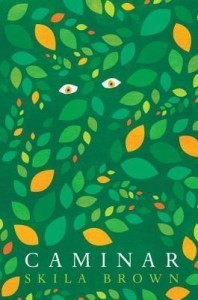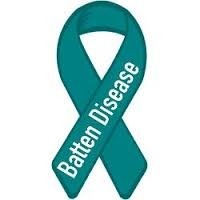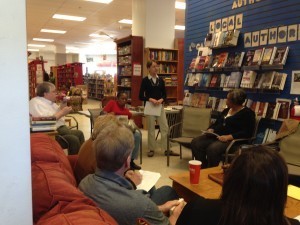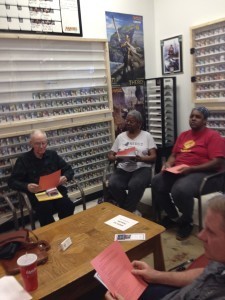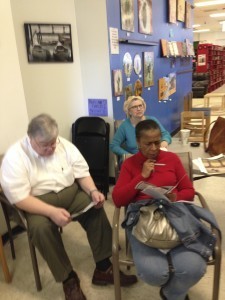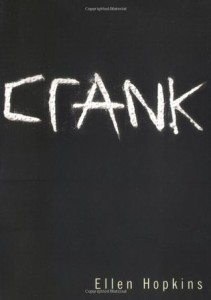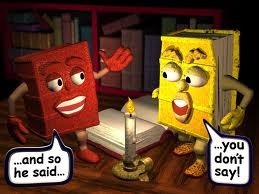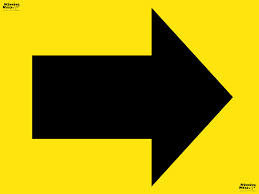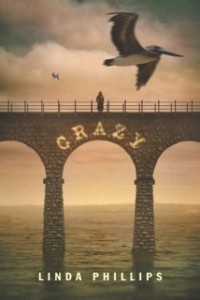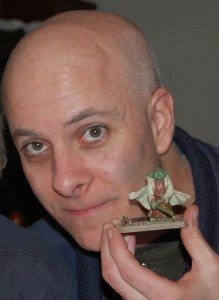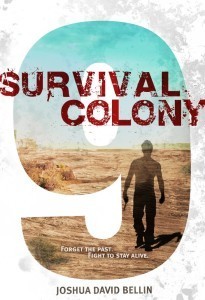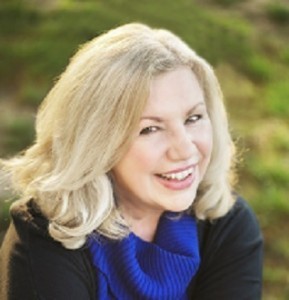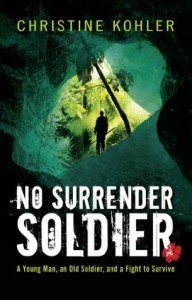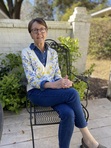Linda Vigen Phillips's Blog, page 8
March 31, 2014
Featuring Skila Brown’s novel in verse: Caminar and a giveaway!
Today in my continuing effort to feature fellow debut authors, I am pleased to welcome Skila Brown, whose book in verse is literally hot off the press as of March 25th! Leave a comment to be entered in a drawing (within the U.S. only) for a copy of this lovely book and I’ll put your name in again for every social media you tell me you contacted.
Here’s the jacket copy:
Set in 1981 Guatemala, a lyrical debut novel tells the powerful tale of a boy who must decide what it means to be a man during a time of war.
Carlos knows that when the soldiers arrive with warnings about the Communist rebels, it is time to be a man and defend the village, keep everyone safe. But Mama tells him not yet—he’s still her quiet moonfaced boy. The soldiers laugh at the villagers, and before they move on, a neighbor is found dangling from a tree, a sign on his neck: Communist.
Mama tells Carlos to run and hide, then try to find her. . . . Numb and alone, he must join a band of guerillas as they trek to the top of the mountain where Carlos’s abuela lives. Will he be in time, and brave enough, to warn them about the soldiers? What will he do then? A novel in verse inspired by actual events during Guatemala’s civil war, Caminar is the moving story of a boy who loses nearly everything before discovering who he really is.
Who is your protagonist?
Carlos is a young boy who’s in that awkward place of being too old to be treated like a child and too young to be allowed to be anything else. He’s a strong kid, full of resilience and kindness. He’s in a hurry to grow up, but not prepared for how fast he must do so, when his village is attacked and he’s left alive but alone.
What are you working on next?
I just finished revising another novel in verse – this one is YA. I don’t think I’ll say much about it except—there is cannibalism!
Where are you from?
I grew up in Kentucky and Tennessee, but I’ve also lived in North Carolina and in various parts of Indiana. One summer I lived in Mexico. And two years ago, we moved to Guatemala for half a year. All beautiful places!
When do you write best?
I write best when I’m by the ocean, surrounded by writer friends, tea and chocolate. And no kids. But since that doesn’t happen often enough, I make do, writing anytime I can. (Which is basically until I hear one of my sons pounding on another one. And even then, sometimes I just yell loudly for them to stop and I keep writing.)
I think the best answer to this question is really a poem, “I Write in the Laundromat” by Marcy Sheiner, and since you’re a poet, Linda, I’m going to share a link to it here: http://libraryland.tumblr.com/post/4702436496/i-write-in-the-laundromat-by-marcy-sheiner
Why did you decide to write about your book topic?
When I learned about what was happening in Guatemala in the 1980s, what most people would consider to be genocide, I was heartbroken. Especially when I did a little digging and found out the U.S. had supplied weaponry and training to the soldiers in charge. Sometimes it feels like we don’t have a lot of power to do anything about the things that disappoint us. But seeing an injustice and telling others about it is a start. And what better way to do that than through a story.
Thanks, Linda, for having me visit your blog!
Skila Brown holds an MFA in Writing for Children and Young Adults from Vermont College of Fine Arts. She lives with her family in Indiana. You can order her book through the following links:
http://www.barnesandnoble.com/w/caminar-skila-brown/1115960950?ean=9780763665166
http://www.indiebound.org/book/9780763665166
**********************
Hey READERS, I would love to hear from you.
Is your MIND FULL of old thoughts or new?
March 24, 2014
Batten Disease: The Second Book
Back in February I began seriously considering what my second book should look like. At that time I was about three fourths of the way through a middle grade, humorous adventure story that never quite felt right. When a fellow author pointed out the advantages of following up a first book with a second book of similar tone, content, and style, I went into deep thinking mode and decided there was a lot of merit to her suggestion. Much of the argument has to do with establishing a brand and developing a readership and the more I thought about it, the more it made sense.
After I decided this was a worthwhile pursuit I immediately drew a big, huge blank. I already knew that writing the second book was going to require a different kind of fuel from that burning drive that feeds the first book. And I already knew that I didn’t have a sequel to Crazy in my head, heart, or soul. So what could I write about that would be serious in tone, easily expressed in verse, and driven by a circumstance about which I felt empathy and passion?
I remembered a minor character in Crazy who had Batten disease, a rare, fatal neurodegenerative disorder. I had gotten the idea for putting this character into Crazy because ironically, there was a student at each of the two schools where I taught that had this rare disease. Even though I never taught either of these students in any of my classes, I saw them daily in the hall, on the playground, or in the lunchroom and I shared the heartache that all the teachers felt for them. Writing about any subject requires passion and as I noted earlier, often the first book seems powered by an almost magical excess of something akin to rocket fuel. But who would NOT become impassioned by watching a healthy child deteriorate on every level almost daily?
After a few weeks of preliminary research and early plotting, writing a book that has a main character with Batten disease is beginning to take shape in my head, my heart, and in rough notes. It satisfies my desire to write about something that could possibly help someone by virtue of shedding light on a worthwhile cause. In a brief search, I was unable to find a single young adult fiction book dealing with the subject, so there is a definite need in the marketplace. Since I will not be writing from personal experience, I know I will need to do some research this time around. So far, I have been in touch with Laura King Edwards, who has founded Taylor’s Tale, on behalf of her little sister who has the disease, and the Hawkins Family, who have two sons, Brandon and Jeremy, with the disease. These are both courageous families, dedicated to living quality lives one day at a time under extremely hard circumstances, and to raising money for research and public awareness about the disease. I appreciate their willingness to talk with me as I work on this project.
I wrote Crazy out of a passionate desire to express the emotions generated by bipolar disorder in my family, and to open dialogue with young adults who may have mental illness in their family. By the same token, it would be my intention to create a book that could both educate young adults about a rare disease, and appeal to their sense of compassion and understanding of peers with terminal illness.
I’m excited about this venture, and I will love to hear from anyone out there who has had any experience not only with this disease, but any of the many rare diseases with no known cure.
**********************
Hey READERS, I would love to hear from you.
Is your MIND FULL of old thoughts or new?
March 17, 2014
Workshop: Writing From the Heart Through Verse
Last week I “took the show on the road” for the first time, and even though I don’t yet have an ARC (advanced reader’s copy) of my book, Crazy, to hang on to for moral support, I had a great experience.
The “show” consists of a workshop titled “Writing From the Heart Through Verse.”
Here’s the brochure pitch in case you are looking for a program for your book club, writer’s group, or high school English or writing class:
Writing about life’s peaks and valleys in free verse form can be a constructive way to deal with emotional issues. You don’t have to be a professional writer to enjoy the benefits.
In this workshop we will discuss a selection of books written in free verse, including Crazy.
Participants will have a hands-on opportunity to explore their own poetic talent. The workshop is open to teens or adults who enjoy poetry.
In the workshop we talked about the difference between free verse and blank verse, and how free verse lends itself well to the release of thoughts and emotions that may have affected us deeply at some point in our lives. I shared a bit about how my book evolved as a cathartic exercise in dealing with my mother’s mental illness.
We explored the poetry of a few well-known authors who have written about real-life circumstances in free verse. Among those are Karen Hesse (Out of the Dust) and Ellen Hopkins (Crank), about whom I have blogged recently, as well as the following:
Thanhha Lai (Inside Out and Back Again)
Sonya Sones (Stop Pretending: What Happened When My Big Sister Went Crazy)
Tracie Vaughn Zimmer (Reaching for Sun)
Carole Boston Weatherford (Becoming Billie Holiday)
I feel especially good about this first run through since the group, Write to Publish, moderated by my friend Catherine Sullivan, wasn’t unanimously fond of verse. Out of about a dozen participants, only a few had any real interest in poetry, and I think that might be pretty representative of the general population. But, as I always found when I was working with young students, there is poetry in everyone to some degree, and often the loudest detractors have the most to offer. In this group, I was overwhelmed by the willingness to share, and the quality of what they had to share after just a few short minutes of writing time.
Perhaps most gratifying to me, a newbie on the circuit, was the following email from participant Tom McCrae (note: he wants to make sure you know he is not the British rock star by the same name!): “I want to thank you for the entertaining presentation at The Last Word (bookstore) on Sunday afternoon. Because I have zero interest in writing free verse, or any other kind of verse for that matter, I was prepared to feign attention while stifling yawns. Instead, your program held my attention and I found it enjoyable. Thank you.”
Honestly, as a writer, I would much rather be home cranking out the next book than out on the promotional trail, but I know that’s the name of the game. If you bother writing it, you have to bother promoting it. But if it all goes as well as it did with this Write to Publish group, I might have a hard time staying home!
**********************
Hey READERS, I would love to hear from you.
Is your MIND FULL of old thoughts or new?
March 10, 2014
Learning from CRANK, by Ellen Hopkins
Two weeks ago I blogged about the impact that Karen Hesse’s book Out of the Dust had on the writing of my own debut book, Crazy. It was significant and if you are interested you can refer back to that blog here. At the same time, but in a totally different way, Ellen Hopkins‘ work, particularly Crank, has proven very influential for me.
The two books couldn’t be more opposite in content and style. Crank is loosely based on the true story of Hopkins’ daughter’s addiction to crank, a form of methamphetamine. It is written in the voice of her daughter. On her website Hopkins says, “Crank began as a personal exploration of the ‘why’s’ behind my daughter’s decisions, and what part I might have played in them. By writing the story from ‘my daughter’s’ perspective, I learned a lot, both about her, and about myself. But I also learned a lot about the nature of addiction, and the physiology of this particular substance.”
Sixteen-year-old Kristina was a good girl who had decent friends, stayed out of trouble, and made great grades. Then one fateful summer her mother sent her to stay with her father who had not been a part of her life for a long time. Into drugs himself, he turned out not to be the prince Kristina had imagined, but instead, distant and uninterested in getting to know who she was.
And who Kristina was began transforming almost immediately upon arrival at her father’s house, when she decided to invent Bree, her alter ego. Bree, free-wheeling and devil-may-care, made bad decisions, including taking up with Adam, her first boyfriend. He introduced her to crank, “the monster.” It didn’t take long for her to begin risking her health, her future, and her sanity, falling into the endless cycle of finding enough money to pay for the next fix. Hopkins masterfully shows how easily Kristina slid into addiction, and what a powerful grip it had on her body, mind, and soul. Making the decision not to abort when she became pregnant was easier than staying off of crank during the pregnancy. And on the last page, we see her yield to the call of the monster while her mother cares for her baby. Hopkins reveals on her website that she and her husband have adopted the child.
I am a fan of Ellen Hopkins for more than one reason. First, she is not afraid of addressing disturbing, present-day issues such as drugs, domestic abuse, suicide and prostitution with stark clarity and bold realism. Crank, according to a recent ALA survey, has been listed in recent years as one of the most challenged books. But Hopkins enjoys connecting with her teen readers and seems committed to using her books as a means of education, prevention, and intervention. I can relate to the fact that Hopkins wrote Crank in free verse form as a cathartic way of working through the grief and anger she felt over her daughter’s addiction. She apparently never dreamed it would become a published book.
And of course I love the unique style of narrative free verse she has developed. The sparse, uncluttered format of her poems allows the full impact of the emotional content to reach the reader without having to plow through unnecessary verbosity. Many of her poems have a signature layout wherein words set apart on the right margin form a second poem when read down the page, while remaining an integral part of the main poem. Her poems move seamlessly from page to page with a satisfying variety of stanza spacing, word spacing, word placement and rhythm. And a good many of her pieces are shape poems, where the lines form a particular pattern or shape that reflects the subject of the poem.
I aspire to be an effective storyteller using the tool of narrative free verse. I believe that free verse form can be easy to follow and useful for struggling or reluctant readers. And I believe it can be used to tell an emotional story with simple intensity and stark imagery. I am extremely thankful for authors like Ellen Hopkins who have paved the way in tackling disturbing contemporary topics with bold dignity, using narrative free verse in such an innovative and eloquent style.
Again, I don’t claim to be anywhere near the superb poet that Ellen Hopkins is, but I truly can claim to have learned tons from reading and studying her creative and informative work. It might be too edgy and too raw for some readers, and it certainly needs to be saved for mature teenagers. But I respect how she has written from the heart about issues that she feels strongly about, and that her ultimate goal is to reach out and touch those facing such issues. These seem like stellar goals to me, and ones that I share for my debut book, Crazy.
I would so LOVE to hear from you, silent readers!! I love that you drop in, but I love it even more when you share your wisdom. Hopkins can be controversial. LET’S TALK!!
**********************
Hey READERS, I would love to hear from you.
Is your MIND FULL of old thoughts or new?
March 3, 2014
Featuring Christina Struyk-Bonn and her debut book, Whisper
Sixteen-year-old Whisper, who has a cleft palate, lives in an encampment with three other young rejects and their caregiver, Nathanael. They are outcasts from a society (in the not-too-distant future) that kills or abandons anyone with a physical or mental disability. Whisper’s mother visits once a year. When she dies, she leaves Whisper a violin, which Nathanael teaches her to play. Whisper’s father comes to claim her, and she becomes his house slave, her disfigurement hidden by a black veil. But when she proves rebellious, she is taken to the city to live with other rejects at a house called Purgatory Palace, where she has to make difficult decisions for herself and for her vulnerable friends.
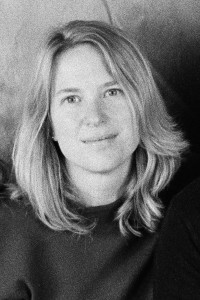
Who is your protagonist?
Whisper is the name of my protagonist, and she’s someone I would like to be. She doesn’t say the first thing that pops into her head, but thinks about her response and is considerate in her answers. She is observant, introspective, caring, and yet strong. Do all writers create protagonists they would like to emulate? I’m not sure, but I certainly have.
What do you love writing about?
I love writing about and for teens. Okay, that’s far too simplistic, but the truth is, I’ve been trying to put my finger on what I love to write and I can’t figure it out. One of the members in my writing group asked me recently what my theme is – what unites my books and manuscripts. I stared at her like maybe she had meningitis. And then I spent half the night thinking about her question. What unites my books? What is the common thread that ties them together?
At the superficial level, there is no theme uniting my manuscripts. My debut novel is dystopian, the book I’m working on is fantasy, the one I was working on last year is a Midwest contemporary novel and many years ago I wrote a children’s book about a squid named Squirty. They are as different as love and hate. But after really thinking about that, I realized that isn’t exactly true. All of my books are about finding a place in this world; a place where we can belong and feel accepted. The genre of the book doesn’t seem to matter – I write all types, but the common theme is certainly there. All of us have a place where we belong, even if it takes years to find it.
When do I write best and when do I not write?
I have not figured out the answer to this question. I have no writing patterns, I have terrible writing habits, and the only time I had any sort of structure, set schedule and success was when I did NaNoWriMo this past year, and the manuscript I churned out during that intensive month was so bad, I haven’t looked at it since. I’m afraid that I do not write when I have to work, when I feel rotten, when the cat pukes on the floor, when the wind is blowing too hard, and when I can play games with my kids. I am very good at finding reasons not to write, and yet I feel compelled to scribble something down when I can. I think there’s something wrong with me.
Where do I get my ideas?
Whoa, I am not revealing that. Okay, I don’t have any tricks or sneaky idea-generating powers. My ideas come from conversations, observations, really amazing students who blow my mind, and simply the machinations of life. I do not dream in stories, I do not commune with any higher idea-generating powers, and I do not have a muse. It would actually be very helpful if I did.
Why am I a writer?
I love stories. I love getting so sucked into a good book that I stay up way too late to finish it. I love watching a really good movie, laughing at the one-liners, crying at the emotional scenes, and becoming furious with the antagonist. I love creating those stories myself. Discovering that amazing character and that powerful voice makes we want to live in another world, even if it’s a world I’m creating, full of flaws and idiosyncrasies. I’m afraid it’s quite an addiction, and I don’t see myself recovering from it anytime soon.
You can find Chris on her website http://www.chrisstruykbonn.com or on twitter @ChrisStruykBonn.
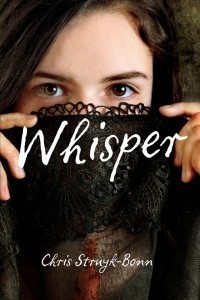
******************
Hey READERS, I would love to hear from you.
Is your MIND FULL of old thoughts or new?
February 24, 2014
Learning from OUT OF THE DUST by Karen Hesse
Whether you write fiction or non-fiction, and whether you want to call it research or priming the pump, every author has a list of books that are “must reads” before beginning the first draft of a new work.
For me, Karen Hesse’s Out of the Dust was at the top of the list, and it remained a constant go-to throughout the writing of my debut book, Crazy. To begin with, who would not be drawn to a book that earns the Newbery Award and the Scott O’Dell Award for Historical Fiction (1997) as well as a prestigious MacArthur Fellowship (2002)? By the way, if you are not familiar with that last one, just try to imagine what it would be like to have a hefty six-figure sum dropped into your lap for creative purposes with no strings attached.
If you haven’t read this heart wrenching YA novel set during the 1930’s Oklahoma dust bowl, you’ve missed a literary and historical treat. Fourteen-year-old Billie Jo recounts her father’s struggle to salvage the dwindling wheat crop while the family anticipates the arrival of a new baby. In spite of the hardships, Billie Jo is a top scholar at school and an accomplished piano player, even participating in a local band to bring in a little extra money. A month before the baby is due, both Billie Jo and her mother are badly burned from a freak accident for which Billie Jo blames herself. When both her mother and the newborn brother die, Billie Jo is left to grieve in a house filled with dust with a father who becomes withdrawn and depressed.
Billie Jo feels like a cripple when she is no longer able to play the piano because of her burn scars, and soon her father develops skin spots that look just like the cancer that took his father’s life. Billie Jo decides to leave her father “before he leaves her” by jumping on a boxcar to Arizona. It is while she is fleeing her past that she discovers she cannot get “out of the dust” because the dust is a part of her and her life with her father. She is able to return with forgiveness for both her father and herself, and they redefine their family relationship that now includes a special friend her father has met.
Out of the Dust worked as an inspiring role model to me for many reasons. First, it is written in lovely, sparse free verse. When asked on her blog why she chose this format, Hesse said, “In my attempt to convey to the reader what it might have been like to live under such challenging conditions, I thought poetry might be an ideal way to subtly key the reader into the importance of every word and every action. It felt essential to cut out anything extraneous, to include only what was absolutely necessary to tell this story and give it a lean but credible shape.” I love the idea that writing in verse gets to the core of what you are trying to say in a way that prose simply can not. While Crazy started out as a collection of adult poems, Hesse’s book helped me find a YA voice from which to tell the challenging conditions of my own story in verse.
The book is historical fiction. Hesse spent extensive time reading articles from a newspaper that was published in the Oklahoma panhandle during the 1930’s dust bowl. She drew from these articles when she included the talent show, dances and social customs of that era in her book. The research my book required was less strenuous, because I lived through the sixties in which it is set. But Out of the Dust provided a strong example of how important those historical details are to the authenticity of the story, and I’m thankful to say that I have an editor who held me accountable for every historical tidbit in my book!
The protagonist, Billie Jo, inspired me to build a realistic character who interacts with friends and events at school while maintaining yearnings and ambitions that draw her beyond the limits of her present circumstances. And most importantly, I learned from studying Billie Jo how essential personal growth in a character is, and what a powerful tool forgiveness can be in the shaping of a story.
I don’t claim to be Karen Hesse by any stretch of the imagination, but I do aspire to her quality of writing. I value what I have learned by reading and rereading her work and trying to crawl inside the heads of such beautifully crafted protagonists as Billie Jo.
Reading the books you admire is like dressing for the job of your dreams. If nothing else, it makes you better at the job you currently have. And who knows, you may just have a shot at that dream job if you keep dressing this way!
******************
Hey READERS, I would love to hear from you.
Is your MIND FULL of old thoughts or new?
February 17, 2014
Leaping from Book One to Book Two
Now that Crazy is cruising nicely toward an October release, it’s time to turn my attention back to book two. I hope you will pop over to the blog at OneFourKidLit today where I am pondering some strategy.
AND I will love for you to jump into the conversation. I need all the help I can get on this one and I will love to tap into the thinking of both writers and readers!
February 10, 2014
TA-DAH! THE COVER IS HERE…..
I know, I know, it’s what’s inside that really matters. But after you’ve poured your soul into the best story you could possibly write, chewed all your nails down to the quick to find an agent and/or an editor who loves your work, and developed ulcers over the hair-splitting process of revising the revisions, you have no idea how exciting it is to have a lovely piece of artwork bearing the title of your book and your name.
I’ve been impatiently bugging my agent and editors since November when they were able to tell me that Richard Tuschman had been hired to do my cover. I was like a child waiting for Christmas morning and I wanted them to deliver the package NOW! Traditionally the author and illustrator are never invited to communicate with one another, and that holds true for me as well. But thanks to the Internet, I was able to look him up and instantly fall in love with his work. If you do the same you will see that he has done the covers of twenty-nine books, including the 2011 Newbery Medal winner, Moon Over Manifest. Yazoo! What a luck of the draw for a first timer like me. No, what an absolute blessing is more like it!
Now, about my cover. I was thrilled when I first saw it. I love the colors and the composition and the inclusion of the pelicans, also key in my story. But my first very honest and human reaction was that the bridge was wrong. Without giving away the spoiler, there is a bridge in the book that plays a major part, almost like another character. I’ll just say the book cover bridge doesn’t look anything like the one in my head as I was writing the book, which was a real bridge that I had walked across many times in my childhood.
I was comforted by the fact that my agent, Julia Kenny, had similar concerns, and she went back to the editor with those concerns on my behalf. Needless to say I got to appreciate once again the value of having a great agent do the hard work for me. I didn’t have the first idea how to express what I was feeling without making a mess out of it. Next, I got to appreciate the value of great editors at Eerdmans Books for Young Readers, who came back to us with a very simple explanation that made all the sense in the world. The bridge is intended to be conceptual, not literal. It’s intended to heighten the emotion of the book. The protagonist (Laura) is, indeed, standing on the edge of frightening and overwhelming circumstances. I hope this beautiful cover does what it’s intended to do, and that’s make you want to read the book and find out what those circumstances are. (Note to those of you who have read early drafts or walked across that literal bridge with me, I will especially love to hear your thoughts without spilling all the beans, of course!)
As for me and my continuing education in this wonderful world of book publishing, I am in awe of the whole process. I have to admit that I have never really considered the integral part that the cover plays in the marketing of a book. And from now on, I think I will be taking a second look at the cover after the reading to see if I can discern the clues that the artist had in mind.
******************
Hey READERS, I would love to hear from you.
Is your MIND FULL of old thoughts or new?
February 3, 2014
Featuring Joshua Bellin’s debut book, Survival Colony Nine
In my continuing series of interviews with fellow debut authors, I am pleased to welcome Josh Bellin, who will talk about his forthcoming book, Survival Colony 9, and the writing life. (I would like to challenge somebody to ask him about what he is holding in his hands, because he sent me the picture without an explanation and I’m dying to know!)
Who am I: I’m a writer who teaches (I used to call myself a teacher who writes, but then I decided writing defines me most). I grew up in Pittsburgh and, after a few stints in other parts of the country, returned here with my wife and two children. Though technically I’ve grown up, I still love all the things I loved when I was a teen: fantasy and science fiction, monster movies, frogs and toads, the outdoors, classic rock, comic books, and writing and drawing. So yes, I was and am a complete geek.
What is your debut book about: War and environmental catastrophe have ravaged the world, and all that’s left of human society are the survival colonies: small, mobile units clinging to the remnants of past technology as they crisscross a hostile desert landscape. Heat, dust, and starvation aren’t their only enemies. They also must evade the Skaldi, creatures with the ability to consume and mimic human hosts that mysteriously appeared on the planet after the wars of destruction.
Fourteen-year-old Querry Genn, a member of Survival Colony Nine, has problems of his own. The leader of his colony–his father, Laman Genn–is never satisfied with him. The girl he loves, Korah, is someone else’s girlfriend. And six months ago, he lost his memory during a Skaldi attack on the colony. If he can recover his past, he might possess the key to defeat the Skaldi.
If he can’t, he’s their next victim.
Where do you get your ideas: Lots of places. In the case of Survival Colony Nine, two things popped into my head more or less at the same time: the name “Querry,” and the image of a desolate landscape and a group of camouflaged survivors traveling across the waste. I put the two together, and voilà! I had a book. (Well, six months and three hundred pages later I did.)
When do you write best: Daytime, definitely. That’s when my mind’s sharpest. And I’m one of those people who can’t write if there’s the slightest distraction–so no music, no browser open, no Twitter, no nothing.
What are you working on next: I completed a sequel to Survival Colony Nine titled Scavenger of Souls, and my agent’s looking it over now. During this past year’s National Novel Writing Month, I started (but didn’t quite finish) a deep-space YA romance titled Freefall. And I’m just beginning to plan a YA alt-history novel having to do with the events leading up to the Civil War. Very ambitious, lots of research–I feel like I’m back in school again!
Why do you think you’ll succeed in this crazy business: Because I already have. I think success, whether as a writer or anything else, is often defined too narrowly: in material terms, as fame and fortune, that kind of thing. To me, success as a writer means writing. I’m thrilled to have my debut published, and I won’t lie–it would be wonderful if lots of people read it and were moved by it. But even if that doesn’t happen, I’ll keep writing, and that means I’ll keep succeeding.
SURVIVAL COLONY NINE will be published by Margaret K. McElderry Books, an imprint of Simon & Schuster, on September 23, 2014. You can learn more about the book and its author by visiting Josh’s website at http://www.joshuadavidbellin.com or by following him on Twitter http://twitter.com/TheYAGuy, Facebook http://www.facebook.com/joshuadavidbellin, and Goodreads http://www.goodreads.com/author/show/7393959.Joshua_David_Bellin.
******************
Hey READERS, I would love to hear from you.
Is your MIND FULL of old thoughts or new?
January 27, 2014
Featuring Christine Kohler’s debut, No Surrender Soldier and two give-aways!
Today I am pleased to feature fellow debut author, Christine Kohler, (www.christinekohlerbooks.com) here to talk about her debut book, No Surrender Soldier, (Merit Press /Adams Media/ F+W Media), which is literally hot off the press on January 18th. Congratulations, Christine, and welcome.
Who is your protagonist?
Kiko, a 15-year-old Chamorro boy, is the main character. No Surrender Soldier is told in two points of view—Kiko’s and Isamu Seto, a WWII Japanese soldier—in alternating chapters. I wrote each character in distinctly different voices and dialects. The prologue takes place during WWII when Seto has to decide what to do when the U.S. Marines invade Guam. However, Chapter 1 is Kiko telling the story, but this is clearly Kiko’s story.
What is your debut book about?
Kiko finds out that his mother was raped by a Japanese soldier during WWII. What he doesn’t know is that a WWII Japanese soldier is hiding in the jungle behind his house. No Surrender Soldier is based on a true event and soldier in history who hid on Guam for 28 years rather than surrender or commit suicide.
Where is your book set?
It takes place during the Vietnam war, 1972, on Guam. There are also flashbacks in Seto’s chapters that take place in pre-war Japan.
When did you get your book inspiration?
I worked as a political reporter and foreign correspondent for Gannet, covering the West Pacific. I had lived in Japan, Guam and Hawaii for nearly a decade. While living and traveling throughout Pacific-Asia I was able to visit WWII battle sites and study aspects of the war in the Pacific Theatre first-hand.
Why did you decide to write about your book topic?
The courage of people on all sides of war in the face of horrendous atrocities and deprivation moved me deeply. Researching and writing No Surrender Soldier came out of my effort to try to understand why people do what they do under extreme circumstances.
Right now there are two give-aways for NO SURRENDER SOLDIER that will last through Jan. 31: (25 autographed books) Goodreads and a give-away by OndFour KidLIt.
http://onefourkidlit.wordpress.com (scroll down a bit and you will come to a cluster of give-aways)
https://www.goodreads.com/book/show/17925536-no-surrender-soldier
******************
Hey READERS, I would love to hear from you.
Is your MIND FULL of old thoughts or new?


